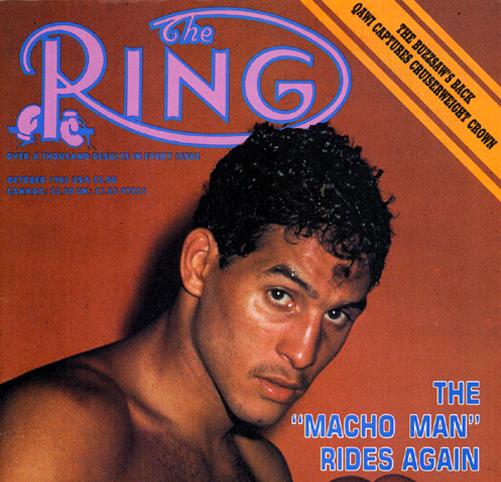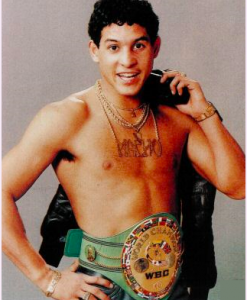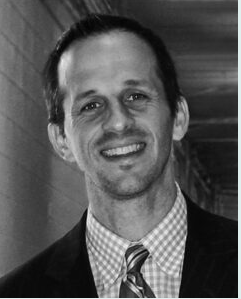The rise and fall of Hector “Macho” Camacho, in book form

You know how to pick ’em, I told author Christian Giudice, who followed his biography of Roberto Duran and a follow-up, on Alexis Arguello, with a new one that drops today, on Hector ‘Macho’ Camacho.
Giudice followed up the Hands of Stone work with an examination of Arguello, a supreme talent with a rich back-story, and then Camacho (below, in 1983), who campaigned as a pro from 1980 until 2010.
He compiled a 79-6-3 record and spent some time on that pound for pound list, as seen by pundits who noted his ridiculous hand speed.

Oh and he got more than his share of ink, with shit talking and shenanigans, some of them dark and self destructive, galore.
Giudice serves up all the greatest hits. I think this one, “Macho Time: The Meteoric Rise and Tragic Fall of Hector Camacho,” will do well for publisher Hamilcar Publications.
That Boston-based outfit, by the way, deserves some BWAA award, for choosing to churn out compelling boxing titles so regularly.
That’s because the fighting pride of “Spanish Harlem” in NYC Camacho was a certified character, in any era, and he deserved this scrutiny, this deep dive into what made him tick.
I checked in with the author–it is pronounced “Jew-da-jay,” by the way and he’s not related to Joe or Theresa–to give myself a better sense of who he is. I like doing that, because it often helps me decipher choices a writer has made, in what to focus on, in what they play up, or play down, or leave out.
WOODS QUESTION: OK, first, Duran, Arguello, then Camacho. Big subjects! Props to you for choosing such bigger than life figures…It says something about you, I think, that you are willing to grapple with these sorts of tasks. What DOES it say about you, in fact? Can you give us a bio blast, who you are, where you grew up and live…and why you choose boxing as the backdrop for these substantial works?
GUIDICE ANSWER: Thank you! I grew up in Haddonfield, NJ and spent my childhood traveling to Atlantic City and Philly to watch fights. I loved all sports, but boxing quickly became a passion. I still have an Alexis Arguello autograph that my father brought me from a fight at the Sands Ballroom in the 1980s. I starting getting the magazines and then taping the fights on my VCR, specifically focusing on a young Camacho, Duran and Ed Hopson (a big fan!).
Q) How much did you know about Camacho coming in? Were you a hardcore Hector fan, so it was a matter of knowing most of the basics, and just needing to move in for a closer look, to collect depth and details?
A) I was not a hardcore fan. Surprisingly enough I do remember buying tapes of his fights with Johnny Sato (in 1982) and Bazooka Limon (in 1983). (Watch that, below. The New York-Puerto Rican icon Camacho entered 21-0, against the Mexican “Bazooka” Limon, who’d already been through the wringer, against Bobby Chacon, Alexis Arguello and Cornelius Boza-Edwards. “Camachos’ hand speed puts me in total awe,” says Ray Leonard, ringside in Bayamon, Puerto Rico with Tim Ryan and Gil Clancy.)
https://www.youtube.com/watch?v=39HkzqPlZwI&t=32s
But it was more of a fascination with his speed and movement. I grew up admiring his skills in the mid-1980s, but I also loved Ray Mancini. After they fought, I lost touch with Hector’s career. It wasn’t until someone randomly mentioned writing a book about him that I thought about his career.
Q) Can you share some about the process, how you went about approaching Camacho? Were interview subjects open to being queried, or was there hesitance, because Hector had engaged in some hijinks, and so some feared that this would be a sort of “sensational” handling?
A) I first approached Hector Camacho Jr. about working together on the project, because I knew he would provide a unique lens into his father’s life that would be authentic and original. Junior then facilitated the interviews with key family members. It was difficult because some subjects were interested at first and then backed away for some reason or another. This is unlike the other three books, in that I had the support of someone like Junior throughout the whole process. It changed everything because now you have someone, who doesn’t hold back, saying, “This is my father.”
https://www.youtube.com/watch?v=aMb7L3H8hvY
Above: Giudice provides superb detail about the 1986 Edwin Rosario fight before, during and after. This fight conveyed to Macho that many in Puerto Rico didn’t see him as a ‘real’ Puerto Rican and also influenced his fighting style going forward.
Q) Your reporting seems to make clear that if not for boxing, Hector was destined for jail, a long stint, or worse. In the end, do you think that boxing did indeed serve him well, that he made the right choice getting into the sweet science?
A) I think it was the one place where Hector felt safe. Boxing gave him an outlet, but also a legitimate escape from a world of poverty. I think he made the only choice he could have at the time because there were so few options, but I think he wanted an education too. During the Golden Gloves, Hector said something that still resonates – that boxing made him a little better than the next guy. I was surprised to hear him say that at such an early age.
Q) Can you share maybe two of your favorite bits in the book, portions that you especially want readers to lean in on?
A) The early stages where Hector is mimicking every Bruce Lee move, on the top of buildings, and also the stories that emerge between him and the Macho Team with Billy Giles and Jerry Villarreal. They started with nothing and they still managed to find solace within each other.

The writer, Giudice, grew up in New Jersey a huge boxing fan. He’s done “the roadwork” in talking to loads of insiders for his latest book.
Q) You lay out facts and anecdotes and such matter of factly. With your outside looking in hat, in your opinion, could different things have been done so Hector was able to transition to middle age, and beyond? Or was this someone who was destined to flame out, no matter what?
A) No one could talk with Hector about his issues outside the ring, and later he became so reckless that it was too late. Unless there was some type of intervention early where Hector was forced to address his problem with drugs step-by-step, then it could have given him a different perspective and sense of hope. Overall the attempts proved futile.















